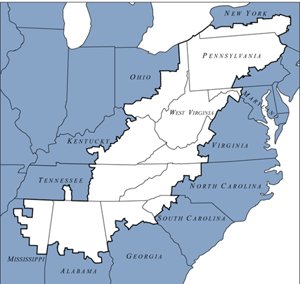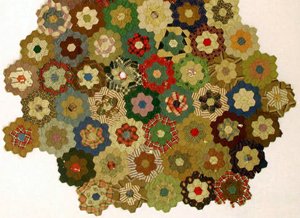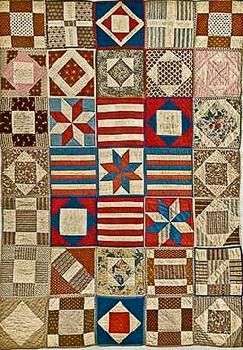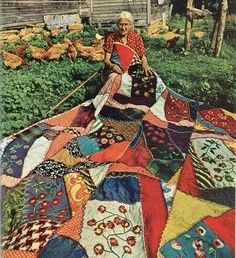Appalachian Quilts
The Appalachian cultural region runs down the interior of the American east coast, from New York to Alabama. The mountains prevented large scale farms. As a result, subsistence farming (where farmers only grow enough food to feed their families) became the backbone of the Appalachian economy. Later industry like logging and coal mining brought profits to elite owners, but the workers still remained poor. This isolation allowed unique cultural traditions to flourish, including their own style of quilting. The Appalachian version of quilting mixed Scottish, Irish, and German folk traditions with local Native American, Amish, and Quaker influences. Quilting patterns from these cultures tend to be geometric and often express family history or local events. But some national events get recorded too. Despite our stereotypes, there was considerable support for the abolitionist movement in some Appalachian regions. Poor whites realized they had much in common with enslaved populations.


The "radical rose"-- a black circle at the center of the traditional rose pattern-- was used to symbolize abolitionist beliefs.

Grandma's flower garden, a common pattern that allowed innovation with hexagonal blocks.

Made for a Soldier's Aid Society, in the collection of the New England Quilt Museum.
The cultural influence of Appalachian Quilts was so strong that, during the Civil War, hundreds of quilts were raffled off to help fund the Union.

A glimpse into the Appalachian art of quilting.